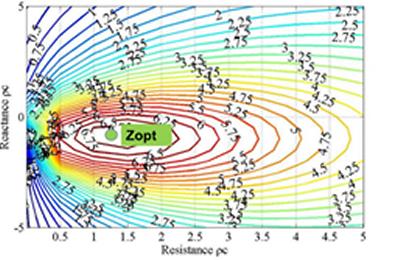Research project: Liner technology
Acoustic liners are used in aero engine nacelles to reduce the noise reaching observers in the far-field.
Acoustic liners are used in aero engine nacelles to reduce the noise reaching observers in the far-field.
Typically, linings are placed throughout the inner walls of the nacelle (Figure 1). Figure 2 shows examples of single layer linear (wire mesh plus perforate support sheet), and single layer perforate, designs. These provide acoustic resistance in the mesh/ perforate, which is then backed by a honeycomb cavity whose depth is tuned to the target frequency. Liner attenuation bandwidths may be increased through the addition of further resistive layers and honeycomb cavities, resulting in double or even triple layer designs.


As part of the Rolls-Royce UTC, ISVR have worked to understand and model the acoustic impedance of linings in the installed engine environment. In flight, these liners experience high grazing flow Mach numbers (up to M0.6), and high sound pressure levels (up to 170dB). As these parameters are a function of the flight phase/ engine power setting, it is important to know how liners respond under all conditions. In particular, grazing flow adds another loss mechanism to perforate facing sheets, while all resistive layers show a non-linear response to increasing sound pressure levels (SPLs > 130dB).
Duct wall impedance optimisation studies (e.g. Figure 3) are typically performed in the ISVR using the ACTRAN FEM propagation code. These studies show that the impedance for maximum attenuation varies with both the direction of sound propagation (upstream or downstream), and the duct Mach number. Once identified, liners must be constructed so that they present the desired impedance at the frequencies of interest.

ISVR have used dedicated test facilities, including the high SPL Bruel and Kjaer flanged impedance tube (Figure 4), and the NLR grazing flow facility (Figure 5), to measure the response of linings under these extreme conditions. This test data has then been used to develop semi-empirical liner impedance models.


The ISVR have developed models which relate a liner construction, including the impact of the manufacturing process (adhesive blockage, variations in perforate hole shapes, sheet thickness, and open area), to the installed impedance. An example of a single degree of perforate model is shown in Figure 6. Figure 7 shows the differing degrees of matching of installed to optimum impedance for varying liner constructions, while Figure 8 shows how the varying quality of liner impedance match translates to the liner attenuation spectrum.



Recently, ISVR have also worked with Rolls-Royce on innovative liner designs which target specific frequency ranges. Examples include the patented folded cavity liner for low frequency inlet attenuation, and the combustion-turbine noise liner, which attenuates both low frequency combustion noise and high frequency turbine noise in the same design space. Figure 9 shows a schematic of the folded cavity, along with ACTRAN FEM modelling of the sound propagation within the cavity. The latter shows how at high frequencies, most of the sound reflects from the “first bounce”. Figure 9 also shows the predicted versus measured performance of the combustion-turbine liner, showing a low frequency peak and a high frequency peak in the attenuation spectrum.


